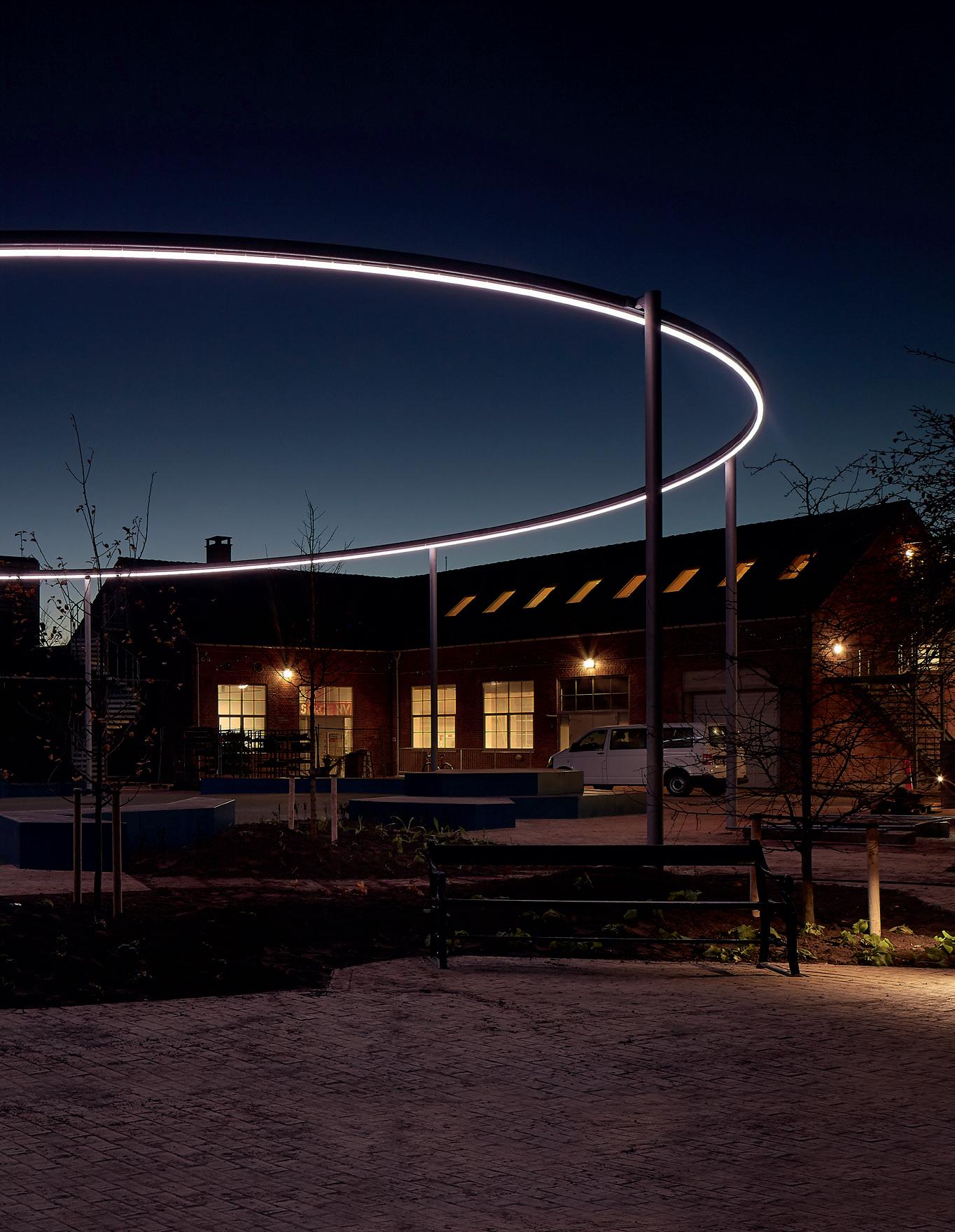
3 minute read
Shedding a little light
Lighting design can be used to enhance an aesthetic expression as well as providing schoolteachers with an efficient pedagogical tool. Additionally, light has a positive effect on our general health and well-being.
In northern Copenhagen, a new trademark for a local neighbourhood has arisen in the shape of a large light ring, almost six meters high. The iconic light circle has a circumference of about 80 meters and frames a new meeting point for the neighbouring young people and local citizens. The square has been transformed into an inviting multifunctional urban space with a football field and classic Copenhagen-style benches beneath a radiating circle of light.
Advertisement
The glowing circle is lit at 100 % power one hour before sunset when daylight still dominates. The light then dims gradually during twilight in step with the increasing darkness. The light intensity drops to 25 % during civil twilight, to 5 % during nautical twilight until it glows with an intensity of 2 % during astronomical twilight. The glowing circle’s colour tones vary and adapt to match the changeable colours of twilight.
Thus, the light is programmed to match and follow the twilight period, which of course varies throughout the year. As one might expect, the lighting project has required a lot of professional thoughts and considerations. Our Project Director in Lighting Design, Merete Madsen, explains how it is particularly important to understand the physiology of the eye while considering the setting for the lighting design: Light is adaptive which means that for it to have an effect one needs to come from something less bright. That is why we work with clearly defined boundaries between zones in terms of light levels and colour tones. However, the boundaries need to be formed by pleasant contrasts in respect of and to not disrupt the surrounding public space. We do not wish to contribute to the fight for attention between bright lights that often finds a way into greater city areas.
Merete Madsen Project Director Lighting Design Copenhagen
A varied landscape of light Variation is an equally important instrument when designing indoor lighting. Especially, if we want the light to match people’s physiological needs. Here, our natural circadian rhythm is an important factor
THEME
DESIGNING SOLUTIONS FOR A POSITIVE LIFE
Smedetoften Client City of Copenhagen and Områdefornyelse nordvest Architect 1:1 Landskab © Søren Aagaard
because we need to create balance and cohesion between natural outside daylight and indoor lighting. The most important contribution of daylight is changeability as well as its life-giving quality. In the health sector, when people are bedridden, you often use lighting that continues to change throughout the day’s 24 hours which has proven to have positive health effects.
Our predilection for nature is an important source of inspiration. Research shows that we prefer warm white spotlights, while ceiling lights can be a cooler white. This is, roughly speaking, a direct simulation of sunlight and the blue sky. In contrast, if you set up completely homogenous lighting you have, more or less, simulated the equivalent to overcast weather. Another example of inspiration could be that most of us enjoy taking a walk through a forest where the light shines down through the leaves of the trees. This type of variation can be included in the lighting design.

Well-being in the classroom The great potential of varied light was recently introduced to a local school in Denmark. The school now has an intelligent lighting system with dynamic lighting that unfolds in different white colour tones and intensity. Consultant in Lighting Design, Anni Høy, has preprogrammed different scenarios in which the light changes over time. When the students enter the classroom that light is turned on and automatically adjusted to the level of daylight in the room. Thereafter, a dynamic cycle begins in which the light changes as the day unfolds. However, teachers can still adjust the light manually and control the intensity and colour nuances. They can adjust the light to form a peaceful atmosphere or use it as a quick stimulus.
Anni Høy Consultant Lighting Design Copenhagen
Anni explains how the brand-new wireless technology has reduced the cost of installation significantly and made it a lot easier to install. The system was developed by Phillips and X Light, while MOE is the first to use the solution for a specific lighting project.










